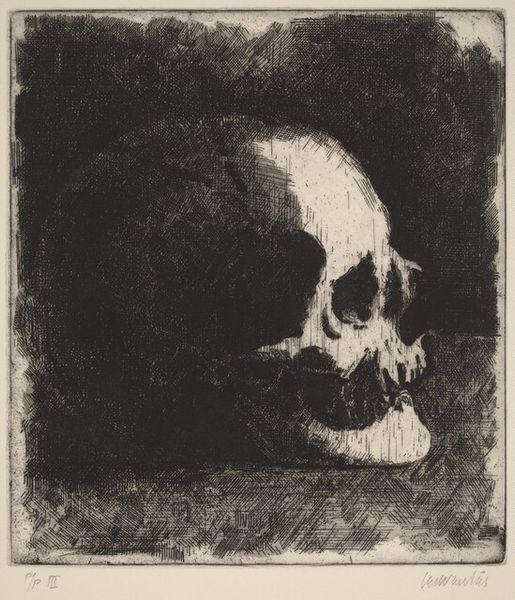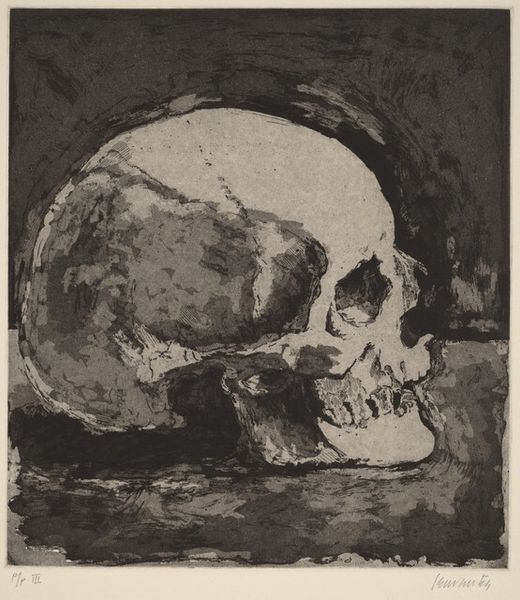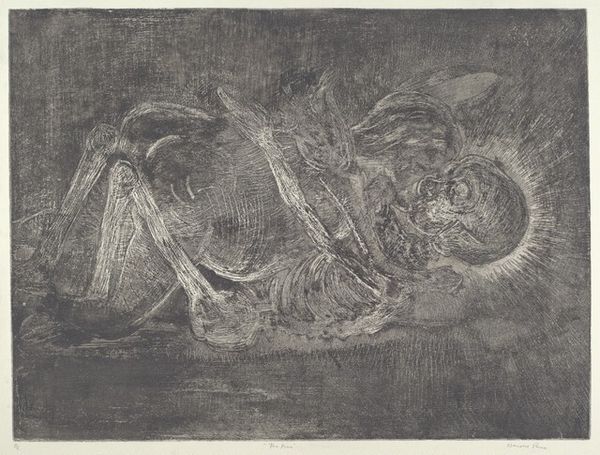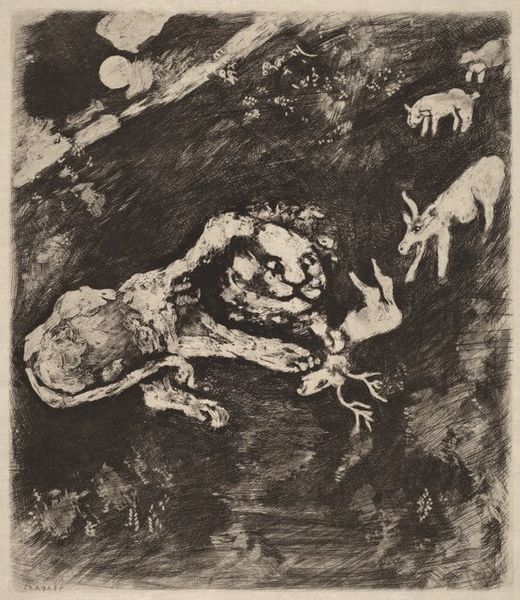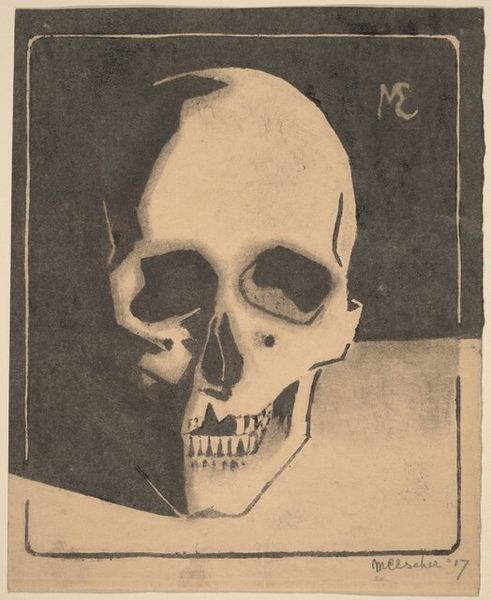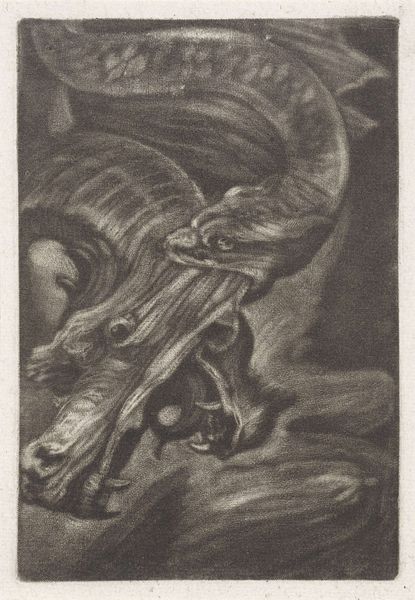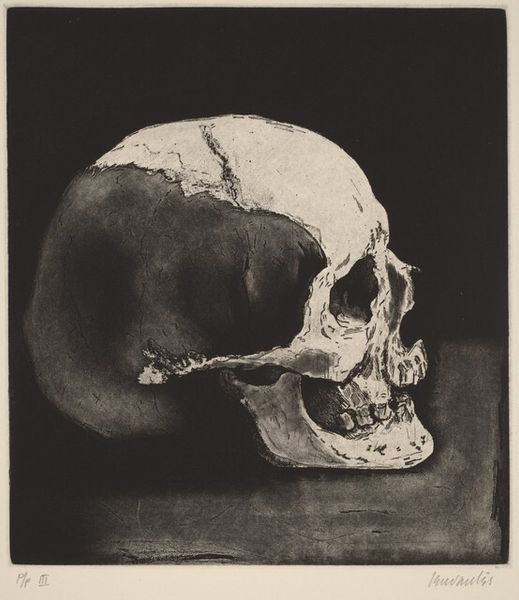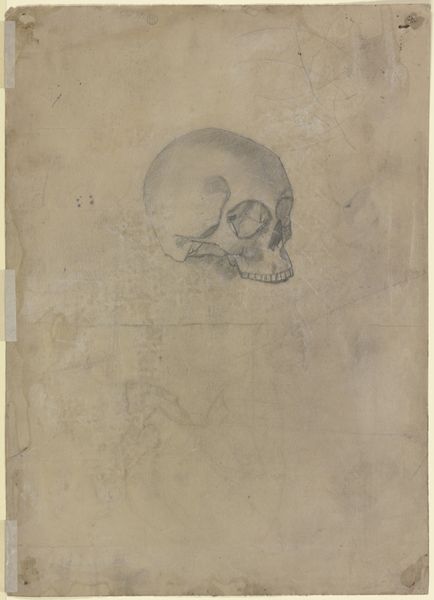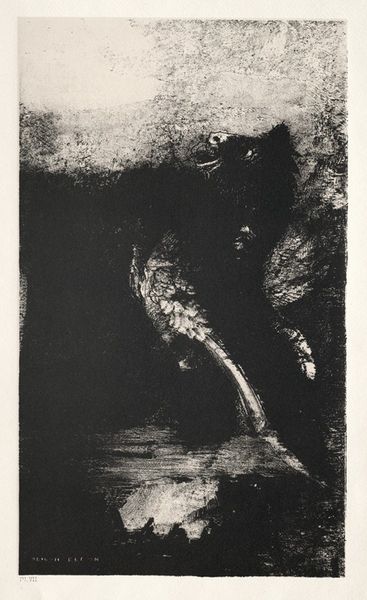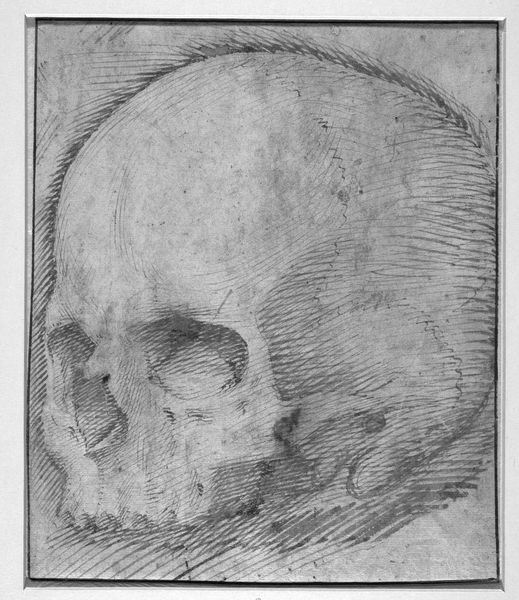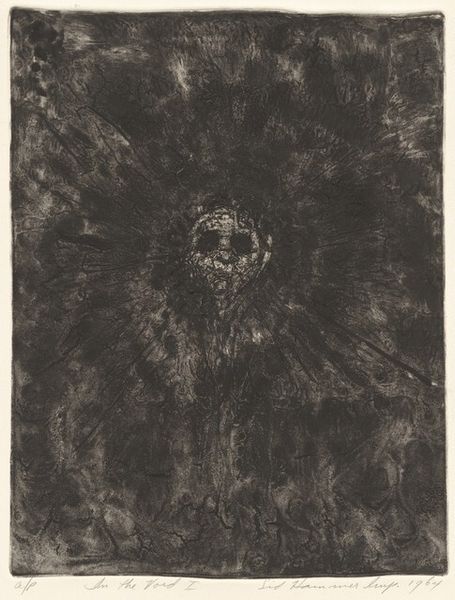
print, etching, intaglio
# print
#
etching
#
intaglio
#
momento-mori
#
geometric
#
realism
Dimensions: image: 27.3 x 24.7 cm (10 3/4 x 9 11/16 in.) sheet: 51.9 x 41 cm (20 7/16 x 16 1/8 in.)
Copyright: National Gallery of Art: CC0 1.0
Editor: This etching from 1981, simply titled "Untitled (Skull)," features an intaglio print on paper. The skull almost seems to emerge from a smoky fog. It has this sort of gothic, haunting feel to it, doesn't it? What do you see in this piece? Curator: Well, considering its production in 1981, one can read this image within the historical context of the AIDS epidemic that began surfacing at that time. The image of a skull serves as a potent memento mori, reminding us of our mortality. I’d be curious to know if Cervantes consciously intended to participate in these social discussions or not. How do you think the choice of the etching medium plays into this interpretation? Editor: It's interesting you bring up the AIDS epidemic! The starkness of the etching—its black and white tones and the way it almost seems aged—definitely amplifies the somber mood, adding layers of anxiety. Did this type of artwork generally circulate among specific demographics or institutions? Curator: Prints, especially etchings, offered a relatively accessible means of circulating images and ideas, even subversive ones. Given that printmaking often functions outside the immediate commercial pressures of painting, it created space for political commentary. Did this change the perception or influence of this image for the viewers in any ways? Editor: It's definitely interesting to consider its potential reach then. I see now how the medium is crucial, not just for its visual impact, but also for its capacity to disseminate its message more widely and engage the social dialogue you highlighted. I learned so much today, especially the relevance of print media! Curator: I agree. Reflecting on the socio-political dynamics of that era really brings out a new understanding, doesn't it?
